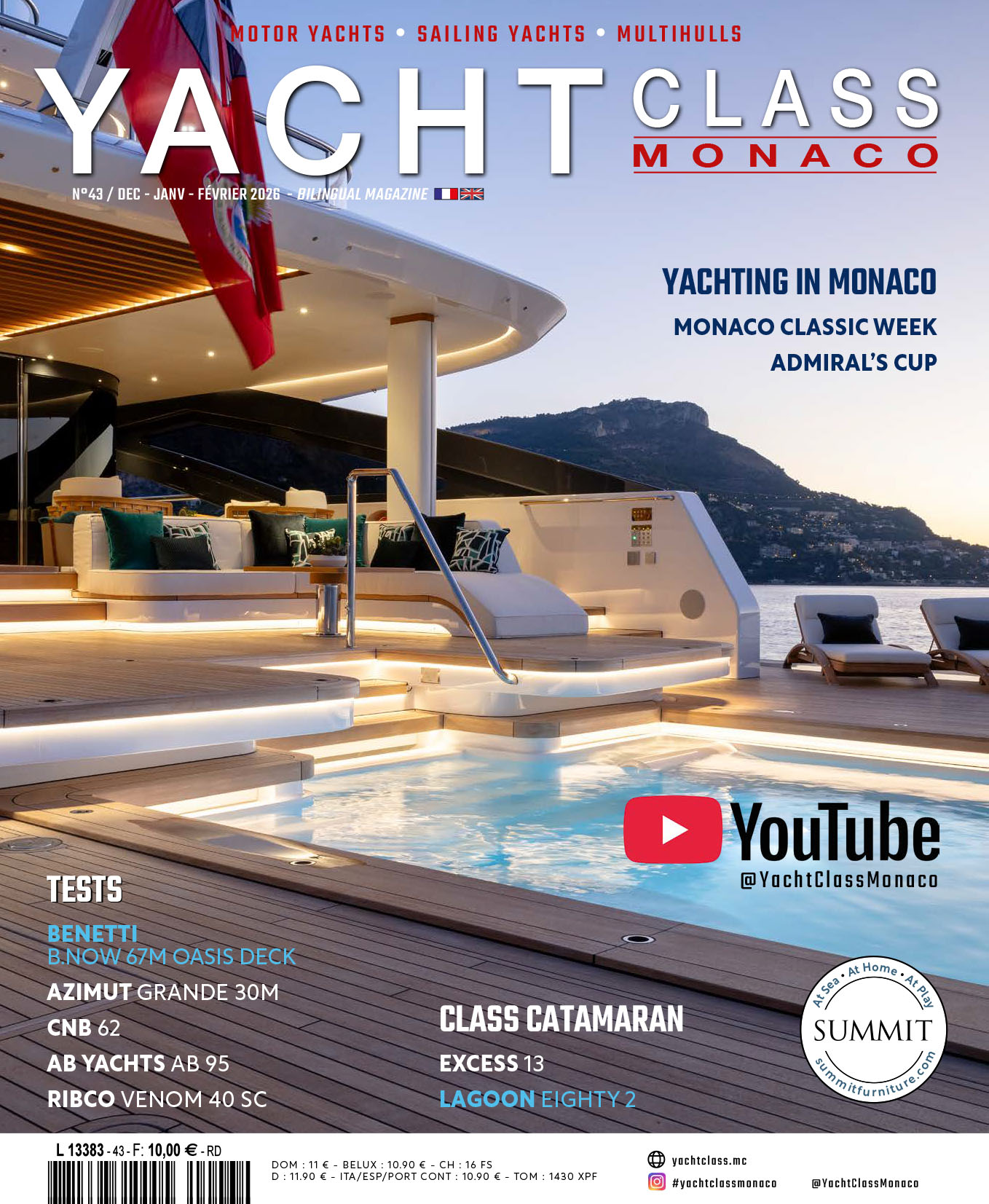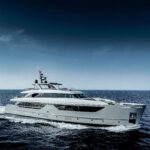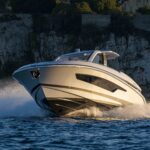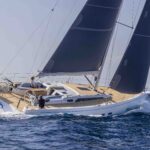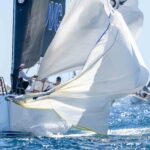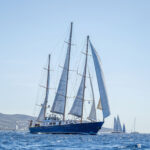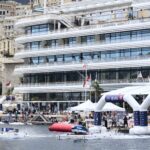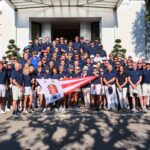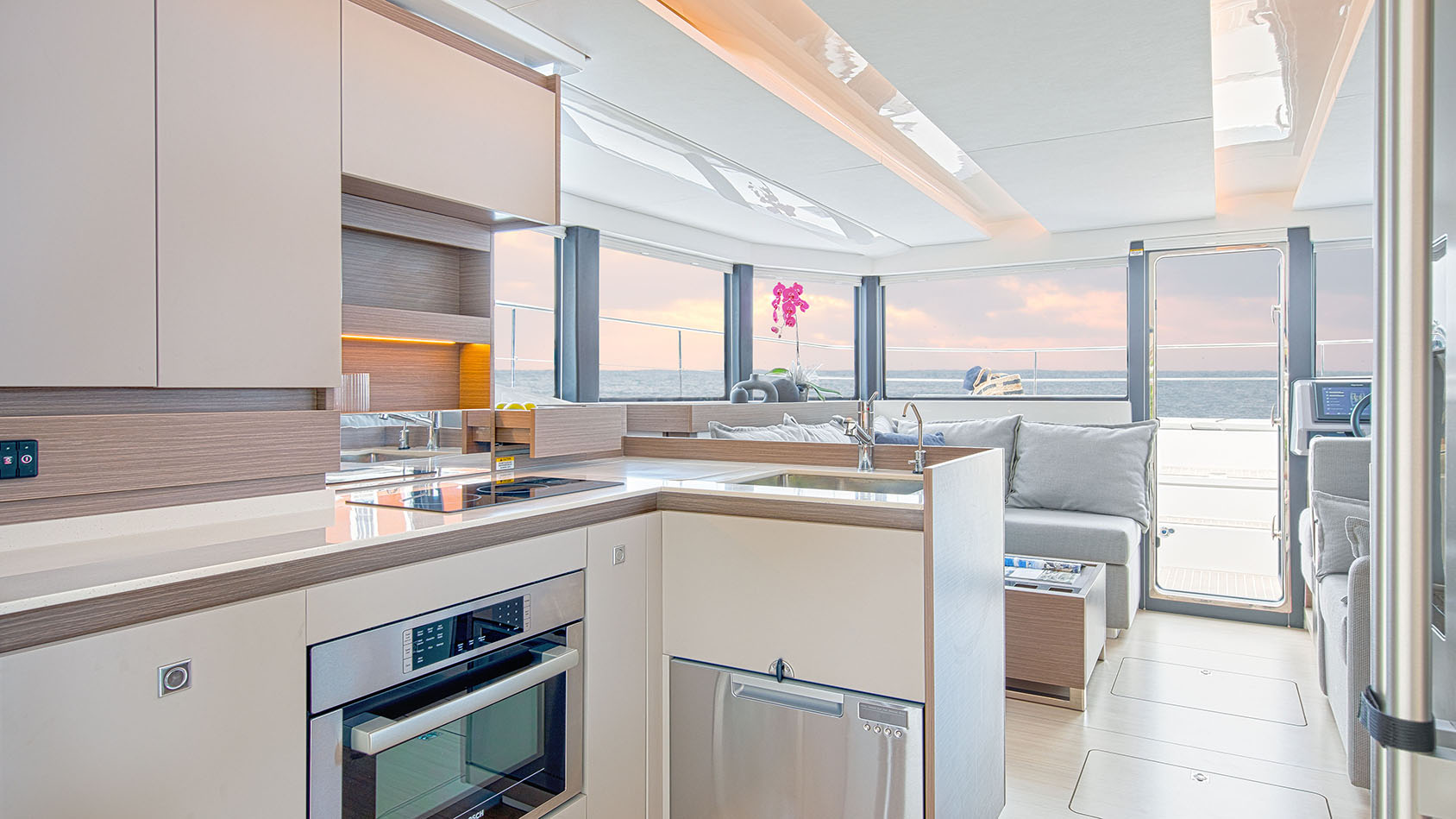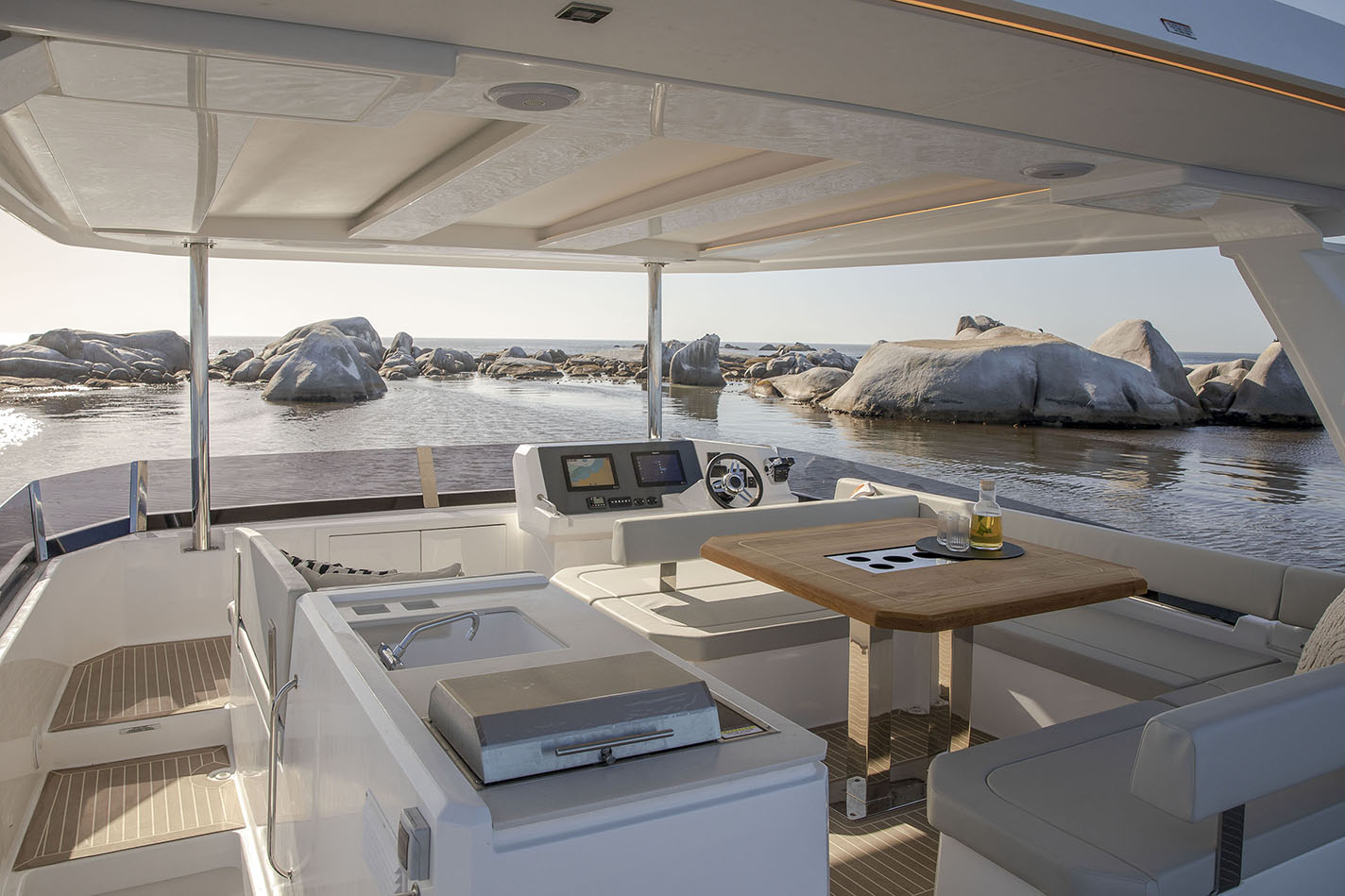Presentation
Yacht Class n°36 (march-april-may 2024)
ROBERTSON & CANE
This Leopard 40 Powercat, tested with the maximum engine power, i.e. 2 x 370 hp diesels, gave us her best. And let us appreciate her livability, both inside and out, and her flattering ergonomics. This three-cabin will quickly gain a good reputation in all cruising conditions.
Written by : Alain Brousse – Photos : DR
Two flags fly from the stern of this 12-metre catamaran: that of South Africa, her country of origin, and that of France, where the brand has become very popular. Firstly in the charter sector, with The Moorings label, but also with potential buyers, who are attracted by catamarans to experience moments of pleasure on the water. Leopard’s sailboat family includes three models (42, 45 and 50 feet). The same goes for the power range with the arrival of the 40PC (Powercat), the entry-level model alongside the 46PC (our sea trial in Yacht Class n° 30) and the 53PC, which, according to the shipyard, is a great success. A date was set in Saint-Raphael, her home port in a way, to test the latest Leopard 40PC on a Mediterranean slightly disturbed by a Mistral tail.
Three engine configurations
When it comes to engines, the yard still relies on traditional diesels, but less polluting formulae are under study and should see the light of day sooner or later. In the meantime, the 40PC can be powered by three different Yanmar diesel configurations: 2 x 250 hp, 2 x 320 hp and 2 x 370 hp. We discovered the nautical capabilities of this 12-metre boat with the most powerful one. The departure manoeuvre requires special attention, as space is limited west of this marina, but thanks to the joystick, the catamaran made the exit with a precision that was much appreciated. And as usual, we tested her ability to lift-off: 11 seconds to go from zero to 20 knots, a result to rank among her strengths. We chose a reasonable cruising speed: 15 knots at 2 700 rpm, i.e. a consumption of 65 litres/hour and a range of 300 miles, enough for a round trip from the continent to Corsica (220 miles) without refuelling and with a safety margin. Our sound level metre gave us a correct level, 66 decibels, recorded from inside the wheelhouse. In terms of performance, this 12-metre can reach up to 23 knots. Furthermore, her seaworthiness is very reassuring, even in slightly choppy seas. Admittedly, as a catamaran, she has a certain stability, both at anchor and under sail. In terms of steering, we preferred the sunbridge cockpit, located forward to starboard, with a perfect 360-degree view and a bench seating for two.
The flybridge can be completely enclosed
And since we operated the berthing manoeuvre from the upper deck partly protected by a roof, let’s stay at this level to get acquainted with its user-friendly features : a central saloon, with a kitchenette (grill, fridge and cabinet) opposite, on the port side. This flybridge can be protected from bad weather by a transparent flexible PVC or entirely closed with a polyester frame, a key feature for the American market. Another option, available in all countries, is to install a sunbed in the rear part of the flybridge. One deck down is the cockpit, slightly smaller than the upper deck but just as comfortable with its lounge for six people. The foredeck is the last outdoor area. Ideal for sunbathing, it is a kind of bow terrace with mattresses. And under these, two hoods each open onto a deep storage compartment whose usefulness was quickly demonstrated.
A very bright living-dining area
A catamaran necessarily implies an interesting beam. This Leopard 40PC boasts a 6.61 m one, which benefits the social area. The latter offers, from the entrance, a completely open but perfectly integrated and complete galley (the dishwasher is optional). Meals can be served quickly in both the cockpit and the interior dining area. The starboard side of this main deck has a comfortable armchair against the cockpit seat, which deserves more ergonomics. This can be achieved by slightly moving it further back. This open plan has windows starting halfway up, providing all the light and views needed to enjoy the natural spectacle. In catamaran, the sleeping cabins – three in the standard version – are located in the hulls. The master couple will occupy the entire starboard one. The double bed is located at the aft end of the cabin, which is followed by a set of furniture, a hairdresser table or a desk, a wardrobe and a bathroom with a washbasin, toilet and shower. The port hull accommodates two cabins each with a double bed and, in the middle, an independent bathroom with shower and toilets. From three cabins, the Leopard 40PC can be extended to four on demand. This is a popular option for charter, perfectly suited to a catamaran that just wants to sail, while offering safety and pleasure.
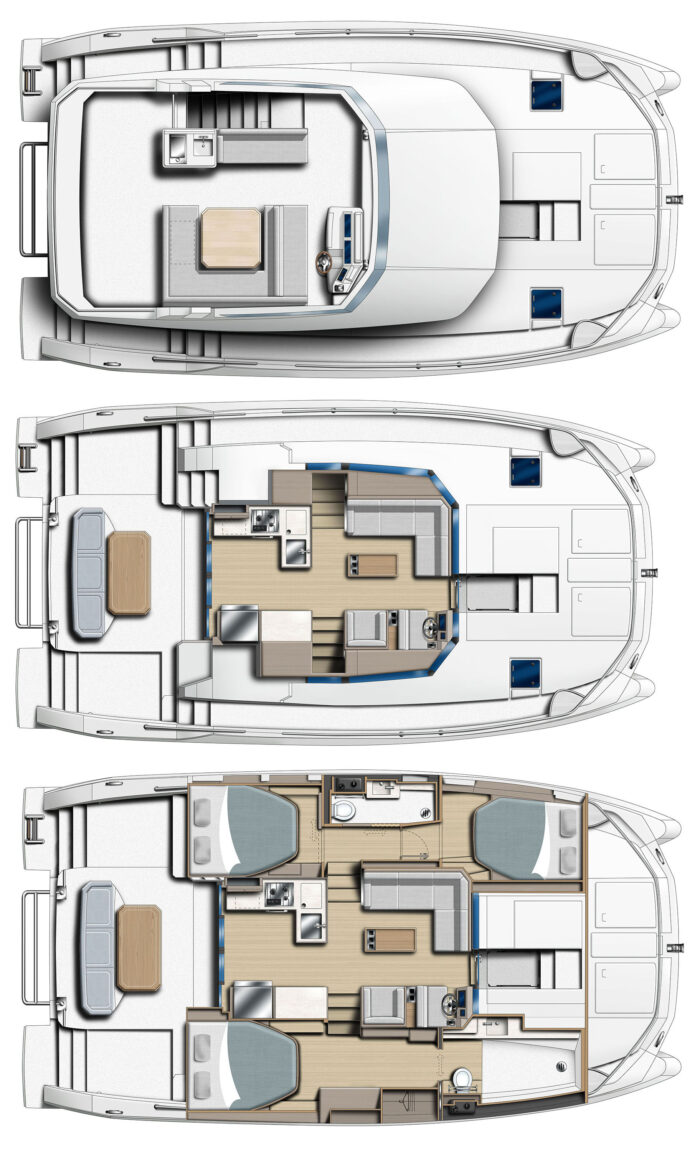
Technical sheet
